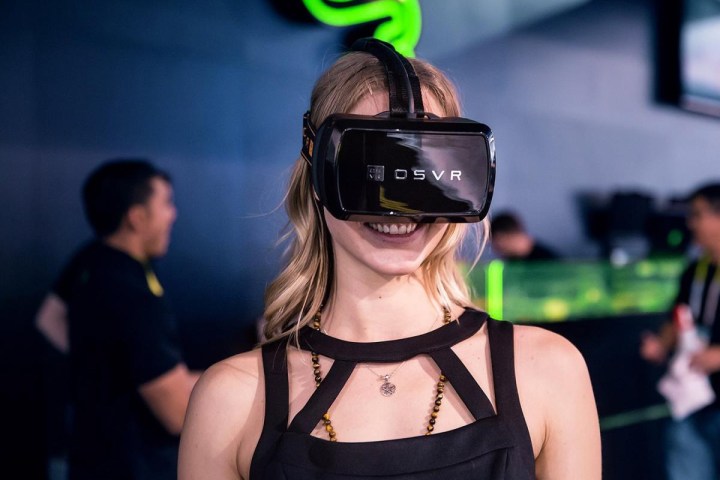
“OSVR presents a great complement to our plans for bringing Acer into the virtual reality industry,” says James Lin, general manager of consumer notebooks for Acer. “The open-source ecosystem allows VR enthusiasts and gamers to use our products for VR-related experiences without worrying about compatibility with other technologies.”
OSVR is essentially a platform based on the open-source Apache 2.0 license that allows all VR-based headsets and controllers from all manufacturers to work with any OSVR-enabled game. According to the website, it’s a “movement” to unify VR (virtual reality) and AR (augmented or “mixed” reality) technologies. The platform aims to reduce fragmentation so that developers don’t have to worry about hardware and content support when creating applications.
A headset based on OSVR hit the scene during CES 2015 thanks to Razer and Sensics. The device was served up to developers as a $300 “hacker development kit” six months later followed by public pre-orders in October and a full commercial release of the kit in November 2015. The kit includes a 5.5-inch OLED Full HD module, a dual lens optics module, a mainboard module with a sensor hub, a faceplate module, an HMD mechanical module, and a belt box module.
Despite the hacker kit made available by Razer, device builders can create their own OSVR-based solutions from scratch by downloading a set of 3D-Files. Builders can also toss in additional components to upgrade Razer’s current hacker kit such as extra positional trackers and cameras. Users can even switch out the faceplate, displays, and optics system to get the best VR experience possible and keep up with industry standards.
According to the OSVR collective, modifications to the hacker kit, “derivative work,” and schematics are automatically licensed back to Razer. In turn, the company can freely re-license the technology to the community under the kit’s Module Development Kit (MDK) license. This license is actually modeled after Google’s own Project Ara Module Development kit.
The OSVR collective said on Thursday that Acer is the latest to jump on board the open-source initiative, joining more than 350 partners. Listed “industry leaders” include Nod, Leap Motion, Razer, Intel, Gearbox Software, Sensics, and more. The client list extends from educators to VR headset/peripheral manufacturers to content producers.
“With 40 years of knowledge and experience in computing and communication, Acer recently affirmed plans to expand its interests into the VR industry,’ the OSVR collective says. “Technology research focused on VR experiences is underway at the company, and it plans to work toward VR devices that are compatible within the OSVR ecosystem.”
News of Acer’s involvement follows a recent announcement that Unreal Engine 4.12 from Epic Games will feature native OSVR support. That means game developers using this engine will have full support for the many VR headsets and controllers that are available now and have yet to come. The news also means that a huge number of upcoming games won’t be locked to a specific VR headset, which should be good news for consumers indecisive about which headset to purchase.



